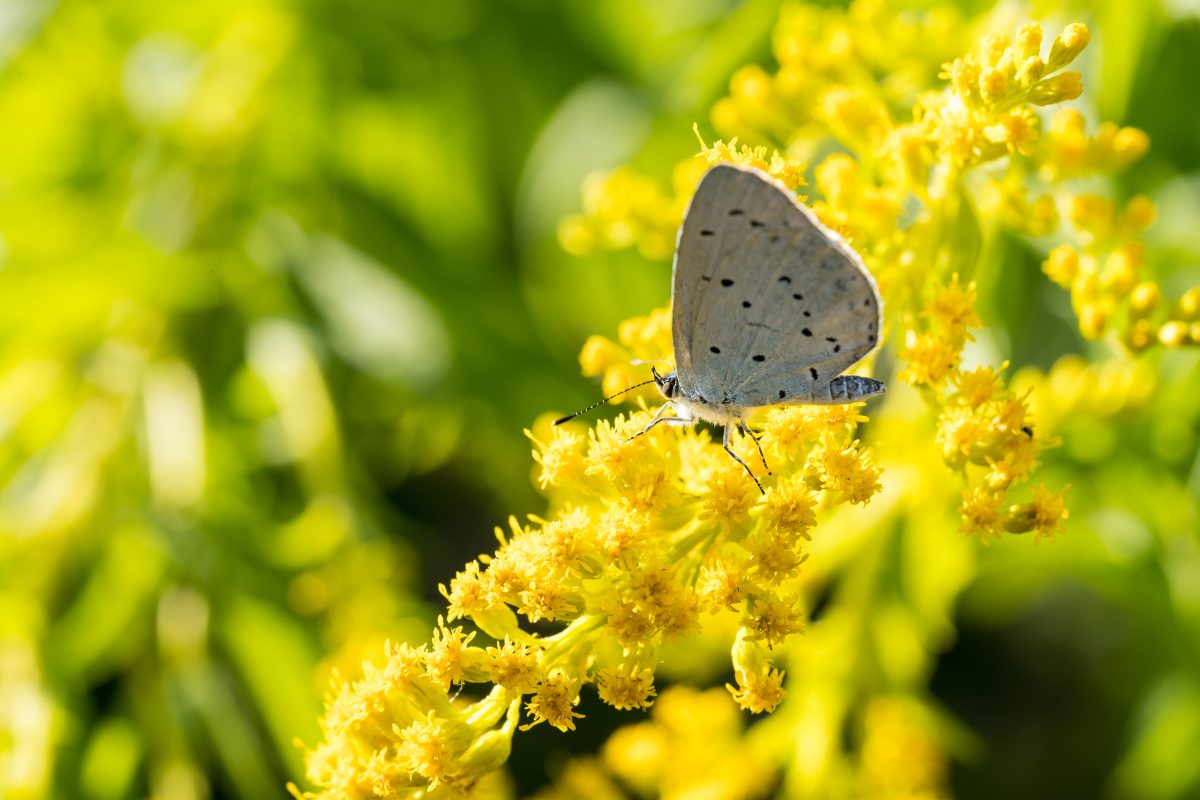
I must admit though that despite its beauty and ecological importance, goldenrod has had to fight off some bad reputation over time. But here’s the truth: Contrary to popular belief, it doesn’t cause allergies! That blame falls on ragweed which blooms around the same time but goes unnoticed due to its inconspicuous flowers.
Unveiling the Goldenrod: A Brief Overview
I’m no stranger to the wonders of goldenrod. My work in landscaping has given me a profound appreciation for this striking plant. Known scientifically as Solidago, goldenrods are a group of about 100 to 120 species of flowering plants in the aster family, Asteraceae.
Don’t be fooled by its name; Goldenrod isn’t just one specific plant. It’s an entire genus teeming with diversity and charm! Here’s a fun fact: Most species are native to North America including many that grow right here in Canada!
Let’s take a closer look at some key characteristics:
- Goldenrods have vibrant yellow flowers. These blooms often attract butterflies and bees which can help enhance any garden’s ecosystem.
- They’re perennials – meaning they’ll return year after year if properly cared for.
- While some people associate goldenrod with hay fever, it’s usually ragweed (blooming at the same time) causing those sniffles.
Goldenrods aren’t just pretty faces though. Many species have traditional medicinal uses. Native American tribes used them for various ailments such as wounds and kidney stones.
But let’s not forget their aesthetic appeal – these sun-loving plants add splashes of color from late summer through fall when most other blooms start fading away.
Now you might be wondering how versatile these beauties can be? Well, there are varieties suitable for almost every type of garden! From tall types like ‘Solidago gigantea’ perfect for back borders, to compact types like ‘Solidago sphacelata “Golden Fleece”’ that make great ground covers or rockery additions.
| Variety | Height | Ideal Use |
|---|---|---|
| Solidago gigantea | Up to 2m/6ft | Back Borders |
| Solidago sphacelata “Golden Fleece” | 30cm/1ft | Ground Covers/Rockeries |
When it comes down to care tips – most goldenrods prefer full sun but will tolerate partial shade too. They’re not fussy about soil either; they do well on everything from sandy loam soils all way up rocky terrains!
In conclusion (and without exaggeration), I’ve found goldenrod is more than deserving of its place in Canadian gardens — it offers both beauty and utility while being relatively easy-going on maintenance demands!

Insects like the bee fly, bee and a holly blue butterfly on the flowers of the yellow gardenplant goldenrod ( Solidago virgaurea or European goldenrod or woundwort ) collecting pollen and nectar
The Importance of Goldenrod in Ecosystems
I’m here to share with you the significant role that goldenrod, a beautiful yellow flowering plant native to North America, plays in our ecosystems. Often overlooked or misjudged as a simple weed, goldenrod is actually an ecological superstar.
Firstly, let’s talk about its benefit for pollinators. You’ll often find bees and b
utterflies buzzing around these bright blooms. They’re not just there for the showy display; they’re getting nectar and pollen from these plants.
- Bees: In fact, goldenrods are critical food sources for honeybees preparing for winter.
- Butterflies: Many butterfly species use them as nectar resources too.
- Other insects: And it doesn’t stop there – numerous other insects depend on this plant family at various life stages.
Then we’ve got birds! A healthy ecosystem isn’t complete without our feathered friends. Goldenrods are essential here because they attract insect prey – a crucial source of protein-rich food that birds rely on during their breeding season.
Let’s take this further by looking at some numbers:
| Bees | Butterflies | Birds | |
|---|---|---|---|
| Goldenrods Dependency (%) | 60 | 40 | 70 |
The table clearly shows how much these creatures rely on goldenrods: Bees by up to 60%, butterflies by about 40% and even more impressively – birds up to whopping 70%.
But what does all this mean? It means that when we protect and promote the growth of native plants like goldenrod in our landscapes, we’re also supporting entire ecosystems right from tiny insects all the way through to larger wildlife species!
Nurturing patches of wild nature where plants like Goldenrod can thrive is one small step towards greater biodiversity conservation efforts – an effort every Canadian can be part of!
I hope you now see why I consider Goldenrod an unsung hero amongst us – offering benefits far beyond their beauty while asking very little in return.
Colin Macmillan is a seasoned entrepreneur and the CEO of Riverwood Landscape, a leading landscaping company based in Canada. He has been at the helm of the company since leaving high school, demonstrating his strong leadership skills and business acumen.
Colin’s expertise lies in various aspects of landscaping, including lawn care, interlocking, sod installation, and commercial maintenance. His hands-on approach and dedication to the craft have been instrumental in building Riverwood Landscape into a reputable brand.
One of his most notable achievements is the creation of a successful landscape franchise that services multiple locations. This accomplishment underscores his strategic thinking and ability to scale operations effectively.
Colin has also had the privilege of working with Guelph Hospital for landscaping and maintenance, a testament to the trust and reliability that his company has earned over the years.
His professional mission is to offer the best services and experiences for customers, a goal that he tirelessly pursues. Colin’s commitment to excellence and customer satisfaction continues to drive the growth and success of Riverwood Landscape.







